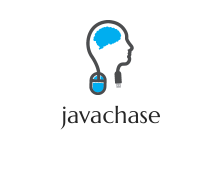In the old days, GUI applications were single-threaded and GUI events were processed from a "main event loop". Modern GUI frameworks use a model that is only slightly different: they create dedicated event dispatch thread (EDT) for handling GUI events.
Single-threaded GUI frameworks are not unique to Java; Qt, NextStep, MacOS Cocoa, X Windows, and many others are also single-threaded. This is not for lack of trying; there have been many attempts to write multithreaded GUI frameworks, but because of persistent problems with race conditions and deadlock, they all eventually arrived at the single-threaded event queue model in which a dedicated thread fetches events off a queue and dispatches them to applicationdefined event handlers. (AWT originally tried to support a greater degree of multithreaded access, and the decision to make Swing single-threaded was based largely on experience with AWT.)
Multithreaded GUI frameworks tend to be particularly susceptible to deadlock, partially because of the unfortunate interaction between input event processing and any sensible object-oriented modeling of GUI components.
Another factor leading to deadlock in multithreaded GUI frameworks is the prevalence of the
model-view-control (MVC) pattern. Factoring user interactions into cooperating model, view, and controller objects greatly simplifies implementing GUI applications, but again raises the risk of inconsistent lock ordering. The controller calls into the model, which notifies the view that something has changed. But the controller can also call into the view, which may in turn call back into the model to query the model state. The result is again inconsistent lock ordering, with the attendant risk of deadlock.
Single-threaded GUI frameworks are not unique to Java; Qt, NextStep, MacOS Cocoa, X Windows, and many others are also single-threaded. This is not for lack of trying; there have been many attempts to write multithreaded GUI frameworks, but because of persistent problems with race conditions and deadlock, they all eventually arrived at the single-threaded event queue model in which a dedicated thread fetches events off a queue and dispatches them to applicationdefined event handlers. (AWT originally tried to support a greater degree of multithreaded access, and the decision to make Swing single-threaded was based largely on experience with AWT.)
Multithreaded GUI frameworks tend to be particularly susceptible to deadlock, partially because of the unfortunate interaction between input event processing and any sensible object-oriented modeling of GUI components.
Another factor leading to deadlock in multithreaded GUI frameworks is the prevalence of the
model-view-control (MVC) pattern. Factoring user interactions into cooperating model, view, and controller objects greatly simplifies implementing GUI applications, but again raises the risk of inconsistent lock ordering. The controller calls into the model, which notifies the view that something has changed. But the controller can also call into the view, which may in turn call back into the model to query the model state. The result is again inconsistent lock ordering, with the attendant risk of deadlock.

No comments:
Post a Comment